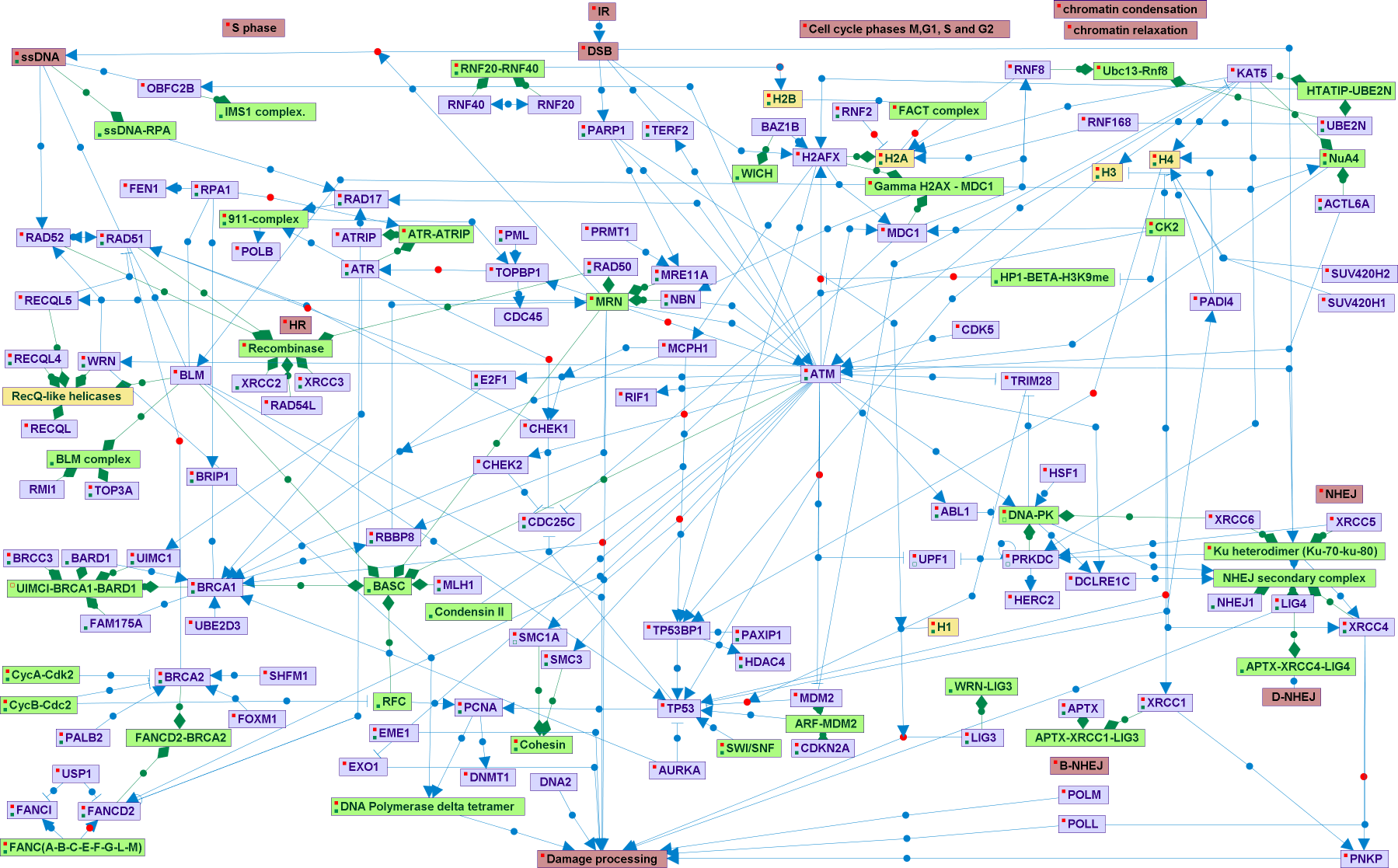DNA double-strand breaks (DSBs) arise in cells from and exogenous and endogenous attacks on the DNA backbone. Ionizing radiation (IR)] is the main exogenous cause of DSB. Proper repair of DSBs is critical and essential for maintaining genomic integrity and stability. Eukaryotic organisms have evolved multi-potent and efficient mechanisms to repair DSBs that are divided primarily into two types of pathways: nonhomologous end joining (NHEJ) and homologous recombination (HR). The DSB repair pathways appear to compete for DSBs, but the balance between them might depend on the cell types and during different cell cycle phases of a single cell type. The selection and regulation of the DSB repair pathway involved the regulated expression and phosphorylation of repair proteins, and the availability of homologous repair templates. In order to enable a better accessibility of the repair factors to the damaged DNA, the surrounding chromatin is modified. The histone modifications includes specific phosphorylations, acetylations, ubiquitinations, and methylations, (and the reversed of these modifications), and exchange of specific histone variants, during and following the complementation of the repair process. While most DSB repair proteins appear to function exclusively in NHEJ or HR, a number of proteins influence both pathways, including the MRN ( MRE11-RAD50-NBS1) complex, BRCA1, histone H2AX, PARP-1, RAD18, DNA-dependent protein kinase catalytic subunit (DNA-PKcs), and ATM.. DNA-PKcs plays a role in mammalian NHEJ, but it also influences HR through a complex regulatory network that may involve crosstalk with ATM, and the regulation of at least 12 proteins involved in HR that are phosphorylated by DNA-PKcs and/or ATM.
